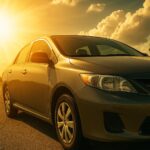We at Stillman and Friedland have discussed the upcoming self-driving technology and now it is out there on the road. Just today the State of California passed legislation that will permit self-driving cars to hit the roads for testing—without a safety driver—as of April 2nd (Maybe this way no one will think that empty seat is just an April Fool’s joke). While the cars will be tightly monitored, that supervision will be entirely remote. California is not the only state where driverless cars are popping up.
Twenty-one states now have laws on the books regarding autonomous vehicles, including Tennessee.
The most recent Tennessee legislation permits the use of driverless technology (ADS).
Notice that local authorities cannot prevent the operation of these vehicles in their districts.
The driverless car has gone far beyond the Mobileye model of assisted or enhanced driving which takes over braking and/or steering if it detects a danger of collision. The GM Cruise will not even include a steering wheel or braking and acceleration pedals.
Yet, these systems are not foolproof. As the ABA Journal notes, the first self-driving fatality occurred in 2016 when visibility issues prevented a Tesla system from detecting a truck which entered the lane in front of the car. Tesla was not held responsible because the system was not intended to be fully automatic, and the driver could potentially have avoided a crash had he been watching the road. Still, the problem was technical and could possibly point to gaps in functionality that may be unavoidable and potentially fatal.
The trend for self-driving extends to public transport. The city of Las Vegas initiated a small 8-passenger free shuttle service in November, only to have an accident occur within one hour of the launch. As this fender-bender shows, accidents will happen despite sophisticated programming for vehicles meant to be fully self-driving. The accident is being blamed on the human driver of a truck, not on the self-¬driving shuttle vehicle—still it begs the question of how far these programs can go to avoid accidents.
The ABA Journal points out that cases involving highly autonomous vehicles will involve multiple defendants and require complex forensic evidence to determine fault. These cases will likely be protracted and difficult because of multiple potential parties and expensive fact-finding.
Stillman and Friedland are looking to our future in Tennessee.
Because we care…






